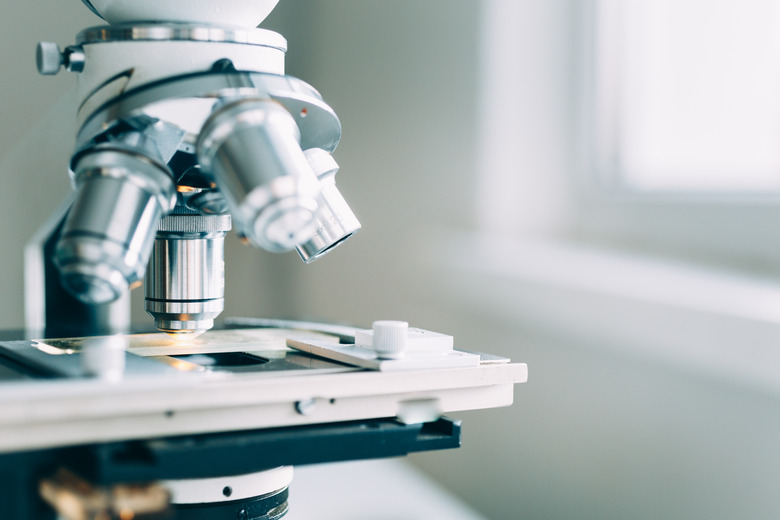How Do Microscopes Improve Our Lives Today?
A microscope lets the user see the tiniest parts of our world: microbes, small structures within larger objects and even the molecules that are the building blocks of all matter. The ability to see otherwise invisible things enriches our lives on many levels. Doctors can diagnose and treat diseases better, scientists are able to reveal links that help put criminals behind bars and make our world safer by examining the strength of bridges and other structures. Students also use microscopes to gain knowledge of the world around them.
TL;DR (Too Long; Didn't Read)
Microscopes play a crucial role in medical research and testing, as well as helping forensic scientists investigate crimes. They're also used in education.
Microscopes in Medicine
Microscopes in Medicine
The use of microscopes in medicine began in the 1860s when Louis Pasteur reported that the microscopic organisms he saw in the microscope caused certain diseases. Until that time, people thought diseases came from evil spirits or God. Pasteur's germ theory revolutionized the process of identifying, treating and preventing infectious diseases. Today, hospital laboratories use microscopes to identify which microbe is causing an infection so physicians can prescribe the proper antibiotic. They are also used to diagnose cancer and other diseases.
Investigating With Microscopes
Investigating With Microscopes
Many types of scientists, seeking to understand the natural and physical world better, use microscope in their work. Forensic scientists examine blood, dust, fibers and other trace materials at a crime scene to help prosecute criminals. Environmental scientists examine soil and water samples, while geneticists observe chromosomes for defects. In engineering, material scientists use microscopes to inspect the components of structures such as buildings, bridges and dams to ensure that they are safe.
Microscopes in Education
Microscopes in Education
In the classroom, microscopes are used to teach students about the structure of things too small to be seen with the human eye alone. The individual cells of plants, animals, bacteria and yeast can all be seen using a compound microscope. Comparing these organisms helps students learn about the variety of life on Earth. Also, the way in which microscopes work can be used to teach students about the properties of light, the physics behind lenses and mirrors and staining techniques for various specimens. Additionally, individual parts of the cell can be seen as students learn about their specific functions.
Cite This Article
MLA
Taylor, Stacy. "How Do Microscopes Improve Our Lives Today?" sciencing.com, https://www.sciencing.com/do-microscopes-improve-lives-today-5761872/. 24 April 2018.
APA
Taylor, Stacy. (2018, April 24). How Do Microscopes Improve Our Lives Today?. sciencing.com. Retrieved from https://www.sciencing.com/do-microscopes-improve-lives-today-5761872/
Chicago
Taylor, Stacy. How Do Microscopes Improve Our Lives Today? last modified March 24, 2022. https://www.sciencing.com/do-microscopes-improve-lives-today-5761872/
